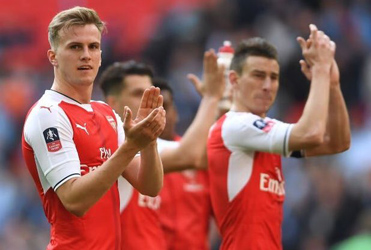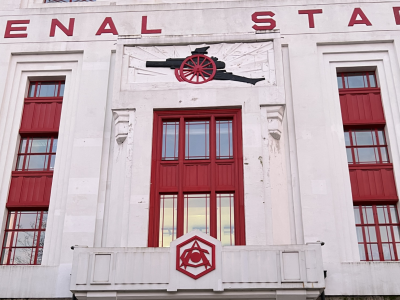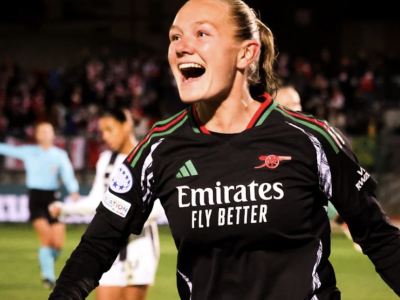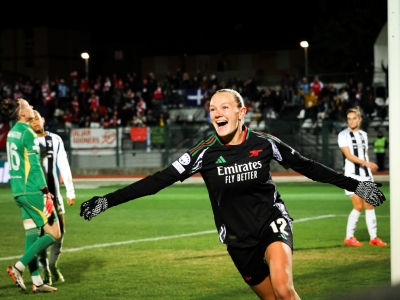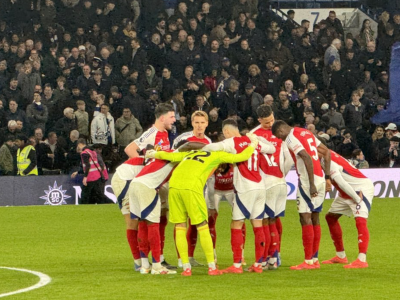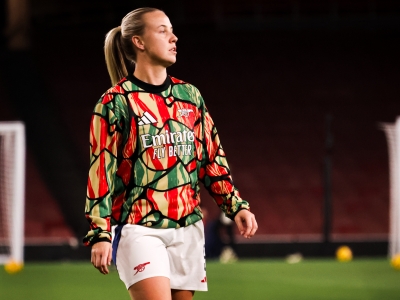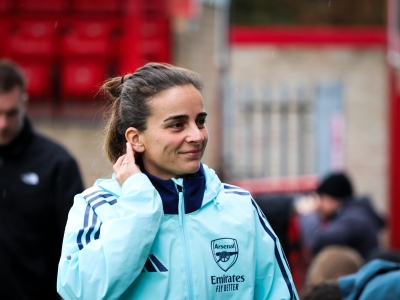Under Antonio Conte, Juventus often utilized a three at the back system with great domestic success. However, it has not been used extensively in the Premier League and certainly without any great degree of success until this season, when Conte himself introduced it at 3-0 down during Chelsea’s early season visit to Arsenal. A winning run followed which looks set to see them win the title in the Italian’s debut campaign in this country.
Other sides have since tried it, including Spurs with notable success. People were wondering whether it would benefit Arsenal and after the horrendous defeat at Crystal Palace, Arsene Wenger introduced it for the away win at Middlesbrough, which was followed by wins against Manchester City in the semi-final and at home to Leicester. The manager explained the switch stating, ‘I believe that what it did was get the focus of the players on something that’s concrete and got rid of the uncertainty.’
Yet after those three wins (in truth, none of them particularly convincing), things fell apart in dramatic style at Tottenham, a game in which, but for the performance of keeper Petr Cech, Arsenal might have lost by more than the two goals the opposition scored.
Three at the back has significance in Arsenal’s history. When the offside law was changed so that only two of the team were needed behind an opponent to keep him onside, Herbert Chapman brought back one of his three half backs to increase the number of defenders from two to three.
In 1989, going for the title, George Graham decided to play three central defenders (Adams, O’Leary and Bould) in a 3-5-2 formation at Old Trafford. The resultant 2-2 draw was a rehearsal for the final match of the season at Anfield, where the team memorably won the title, keeping a clean sheet in the process.
Bruce Rioch re-introduced it in the 1995-96 season, and the formation was retained for the season after, during which Arsene Wenger arrived. However, he switched to his preferred 4-4-2 in time for the 1997-98 double winning season. Since then, three at the back has only ever been used by Wenger in the dying minutes of matches where his team are hanging on to a one goal lead. The formation did change to 4-1-2-1-2 to accommodate Cesc Fabregas a few seasons ago, before morphing into the 4-2-3-1 we have seen until recently. So Wenger is willing to try new things, but without the success he achieved with 4-4-2.
One thing is confusing though. If the switch was made to get rid of uncertainty, why change the personnel before they have played a few matches together to hone the new system. Here are the line-ups including wing backs from the recent matches:
Middlesbrough: Oxlade Chamberlain – Gabriel – Koscielny – Holding – Monreal
Man City: Oxlade Chamberlain – Gabriel – Koscielny – Holding – Monreal
Leicester: Bellerin - Gabriel – Koscielny – Monreal – Gibbs
Tottenham: Oxlade Chamberlain – Gabriel – Koscielny – Monreal – Gibbs
So much for getting rid of uncertainty! After two good performances in which he grew into the role, why was Holding dropped? Monreal played very well as a wing back against Manchester City, so why replace a centre back with the Spaniard, who was less than convincing when used as an emergency central defender in the 2014-15 season, admitting, “It’s not my natural position”. Against Spurs, surely playing the same quintet that won against Manchester City would have been more sensible, especially given Kieran Gibbs’ relative paucity of first team performances this season, and Holding’s impressive display in the semi-final.
It will be interesting to see whether Arsene Wenger retains the formation against Manchester United on Sunday, and if he does whether or not Holding will return to the starting line-up. Certainly, it seems unfeasible that the manager will field the same five across the backline that he did at White Hart Lane, and one imagines Kieran Gibbs may be the most vulnerable of those that did. Had Wenger retained the same five he used against Boro and Manchester City in the following two games, perhaps they might have benefitted from greater understanding against Spurs. One can allow for rotation of the two wing backs for the visit of Leicester in the name of rotation – the position does demand a lot physically, but Gibbs kept his spot and Monreal remained in centre back when in truth he might have been better being rested against the Foxes. And there is also the question of how much the Gunners boss really believes in the system is also under scrutiny after he switched to four at the back during the second half of the last two matches.
If he is to use it on Sunday, let’s hope he not only picks the best options, but that there has been some serious practice on the training ground.

